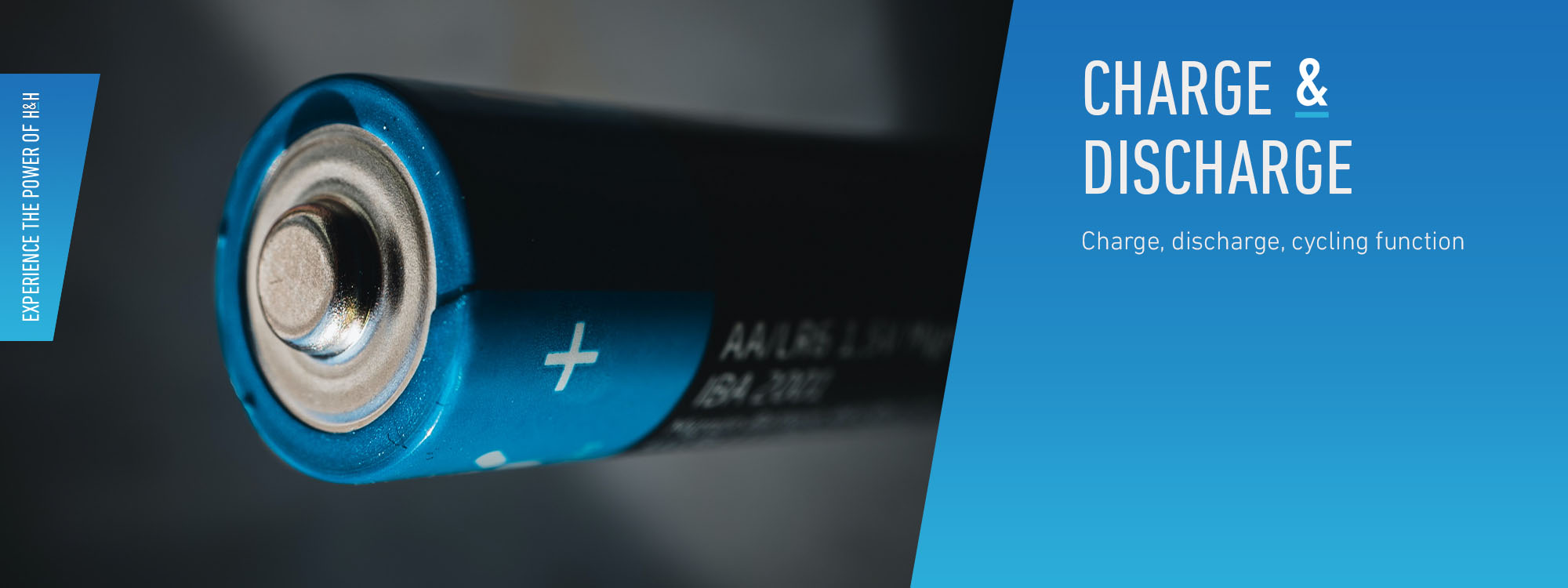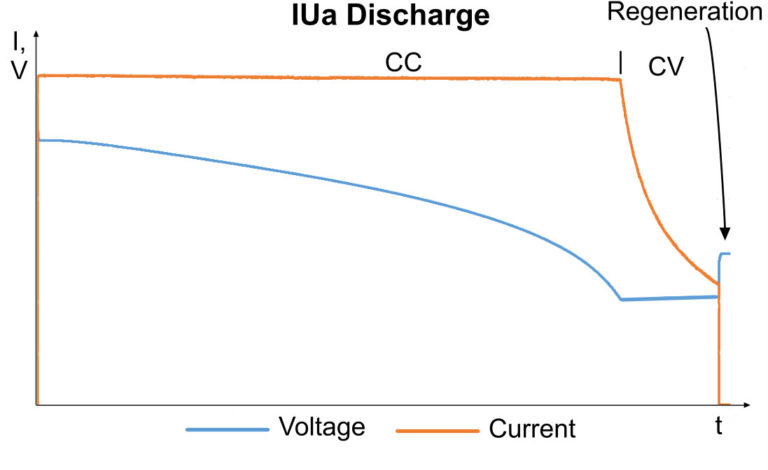
Functions for Testing Energy Storage Devices
Discharge Function
For testing energy storage devices such as batteries, ultracaps and capacitors, the electronic load offers a function for controlled discharge at defined operating, protection and switch-off conditions.
With local operation, the user is guided through the menu so that the electronic load requires some important settings such as current and voltage protection.
During ongoing discharging, the load cumulates every second the charge taken from the test object in Ah and the energy in Wh. These are displayed in the user interface, as are the latest measured values for voltage and current with the elapsed discharge time

By loading the video, you agree to YouTube's privacy policy.
Learn more
Discharge Mode
The discharge function is basically possible in any operating mode. In local operation the following operating modes for discharging are available:
- Current mode
- Power mode
- Resistance mode
- dynamic discharging in List mode
- IUa discharging in CC+CV mode
In power mode the electronic load works software-controlled using a fast A/D converter with low resolution (see technical data: TechDat_PLI_gn.PDF). The user must decide if accuracy and resolution are sufficient for the test.
Enter the setting value corresponding to the chosen operating mode directly in the “Level” window. It is editable even later during a running static discharge function.
IUa Discharging
A special type of discharging is the CC+CV or IUa discharge. In this case, the DUT is first discharged with constant current down to a defined minimum voltage (setting value of the undervoltage protection). When this voltage is reached, the electronic load implicitly switches over to voltage mode, i.e. the specified voltage is kept constant until the measured current has fallen below the value of the stop criterion current. Only then does the load switch off the load input and the test is finished.

Stop Criteria:
- max. charge
- max. energy
- max. time
- min. current
- min. voltage
When one of the stop criteria is reached, the electronic load switches off the load input and deactivates the discharge function.
Static Measurement Data Acquisition
Static measurement data acquisition can be activated for the storage of measurement data both for local operation and for digital remote control.
Measurement Data Acquisition With Follow-up Time on USB Memory
With local operation, the electronic load can record the measured values on a USB flash drive. The special feature of the discharge function is that a follow-up time can be defined here during data logging in order to document the recovery phase of the DUT after switch-off.
Charge Function
Cycling Function
Internal Resistance Setting
Internal Resistance Measurement
The autarkic function calculates the internal resistance of the DUT in a procedure as described in various standards, e.g. DIN EN 61951, DIN EN 61960.

